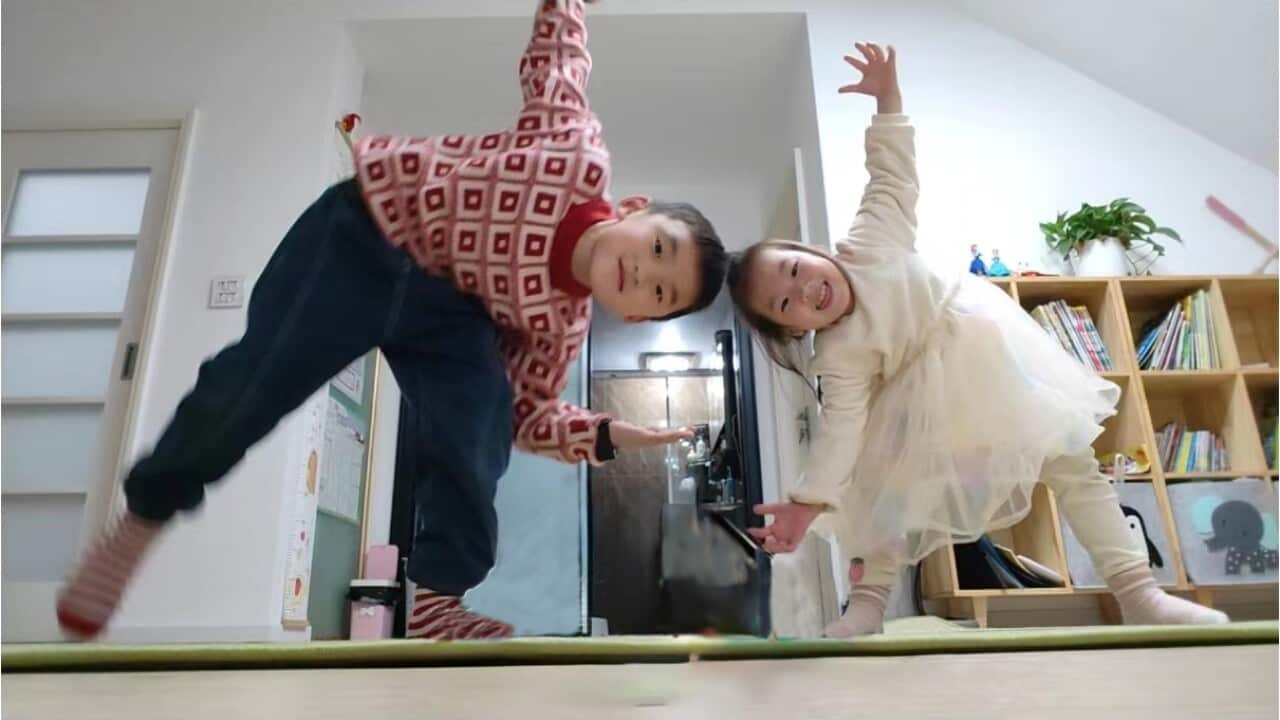Key Points
- Lagging numeracy and Chinese language skills have led many first-generation migrants to take their children back to China.
- Educational experts say Chinese and Australian students have their own academic strengths.
- OECD PISA data from 2018 shows Australian students were three-and-a-half years behind their Chinese peers in maths.
She says that she preferred her children to do their primary schooling in China before returning to Australia for secondary schooling and higher studies.
I wanted my son to develop better study habits in a mainstream Chinese school.
Ying Lu, mother of two Australian-born children
“Every time we used to pick him up from kindergarten, his pants were covered in dirt from playing in the sandpit,” Ms Lu tells SBS Chinese from Taizhou city in China’s southeastern province of Zhejiang, where she now lives.
Ying Lu’s family of four moved back to China in 2020 before her son started primary school in Australia. Credit: Ying Lu
Chinese international students ‘above average in maths’
In his 12 years of teaching in Australia, he remembers meeting many new students from China or Hong Kong, who he says have “generally performed above average in maths”.
The education system in China lays emphasis on arithmetic skills and test-taking techniques, so students perform better in maths.
Ben Liu, a secondary school teacher
A critical thinking test has been added as an “innovation domain”, whose results will be released in 2024.

Chinese students outperformed their Australian peers in three major secondary school subjects according to an OECD report. Credit: Australian Council for Educational Research (ACER)
A spokesperson from the federal Department of Education also tells SBS Chinese that the Australian education system is “good” but “it can be a lot better and a lot fairer”.
Mr Liu believes that the academic performance of Australian students is likely to continue to decline due to the “relatively shallow content” being taught in schools.

Ben Liu taught physics at a secondary school in China as well before moving to Australia. Credit: Ben Liu
“The syllabus is relatively simple [compared with China]. My daughter is in Year 6 and she has little understanding of fractions and percentages,” he says.
She says that the key to improved student outcomes is evidence-based teaching including the adoption of explicit instruction and the teaching of phonics.
Teachers are also being severely hampered by an over-crowded and ideologically-driven curriculum which does not allow them to adequately focus on the foundations of education – reading, writing and arithmetic.
Senator Sarah Henderson, Shadow Minister for Education

The Year 7/8 to 12 full-time apparent retention rate amongst Australian students fell to 80.5% from 83.1% in 2021. Credit: ABS
Australian students ‘self-motivated’ to study
She says her local Australian student cohort generally had a clearer learning path and set their own academic goals, whereas her Chinese students needed closer attention and guidance from parents or teachers.

Primary school teacher Ivy Lai says Chinese students need more guidance and attention from teachers and parents. Credit: Ivy Lai
Ms Lai says teaching Chinese students tended to be more labour-intensive because her presence was required.
There were notable writing differences, particularly in argumentative writing, Ms Lai adds.
Chinese students would sit on the fence when we discussed topics like whether wearing a uniform to school should be compulsory or not.
Ivy Lai, a primary school teacher in Perth, Western Australia
“But in Australia, we teach children to have strong opinions and persuasion skills,” she tells SBS Chinese.
Regrets of reverse migration?
He believes the children have benefited from having closer ties to the maternal and paternal sides of the family.

Besides academic learning, Mr Zhao’s son is also busy with other extracurricular activities like swimming, playing the piano and basketball. Credit: Ying Lu
Calling the Chinese system “spoon-feeding education,” Mr Zhao tells SBS Chinese that his son’s academic performance has improved greatly after studying in China.
Meanwhile, sporting activities and instrument-learning are being slotted into his son’s daily schedule to ensure he has something in common with students upon re-entering the Australian school system at the secondary level.
I asked my son earlier if he remembered life in Australia. His eyes lit up as he nodded ’yes‘, so I know he’s keen to get back there.
Wei Zhao
“If I were in his shoes, I think he would prefer to go to school in Australia,” the father says.


